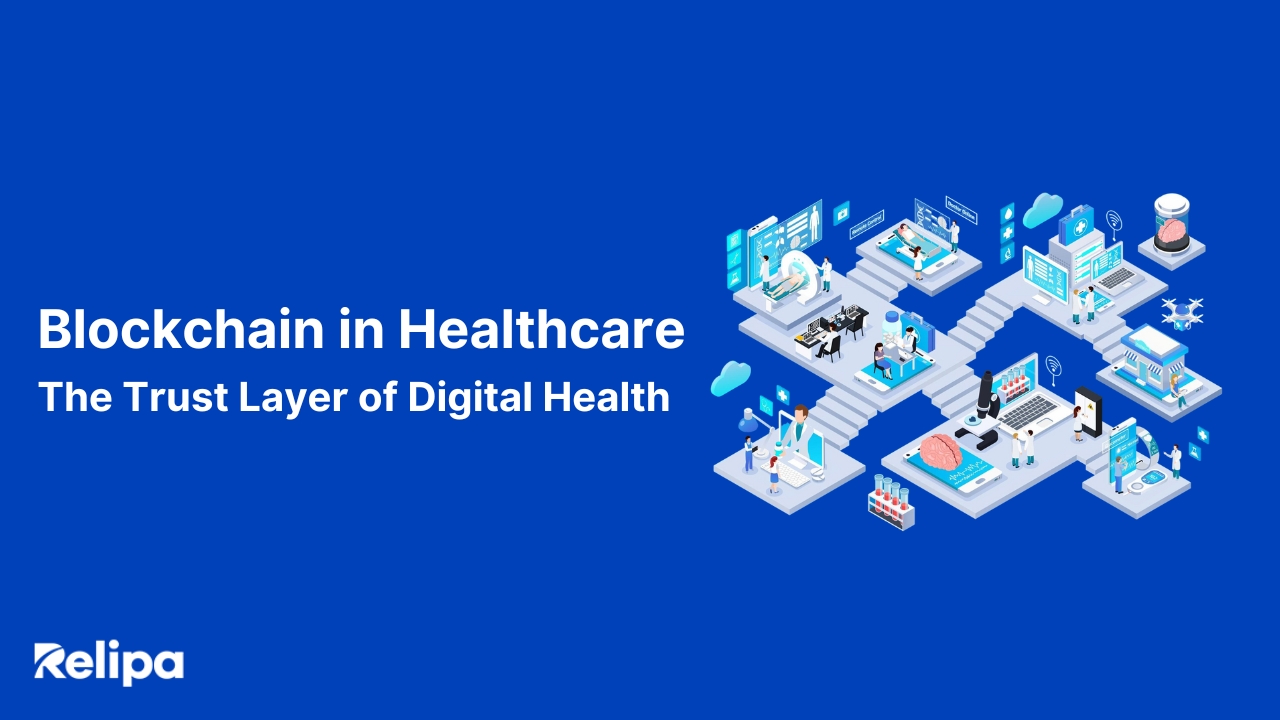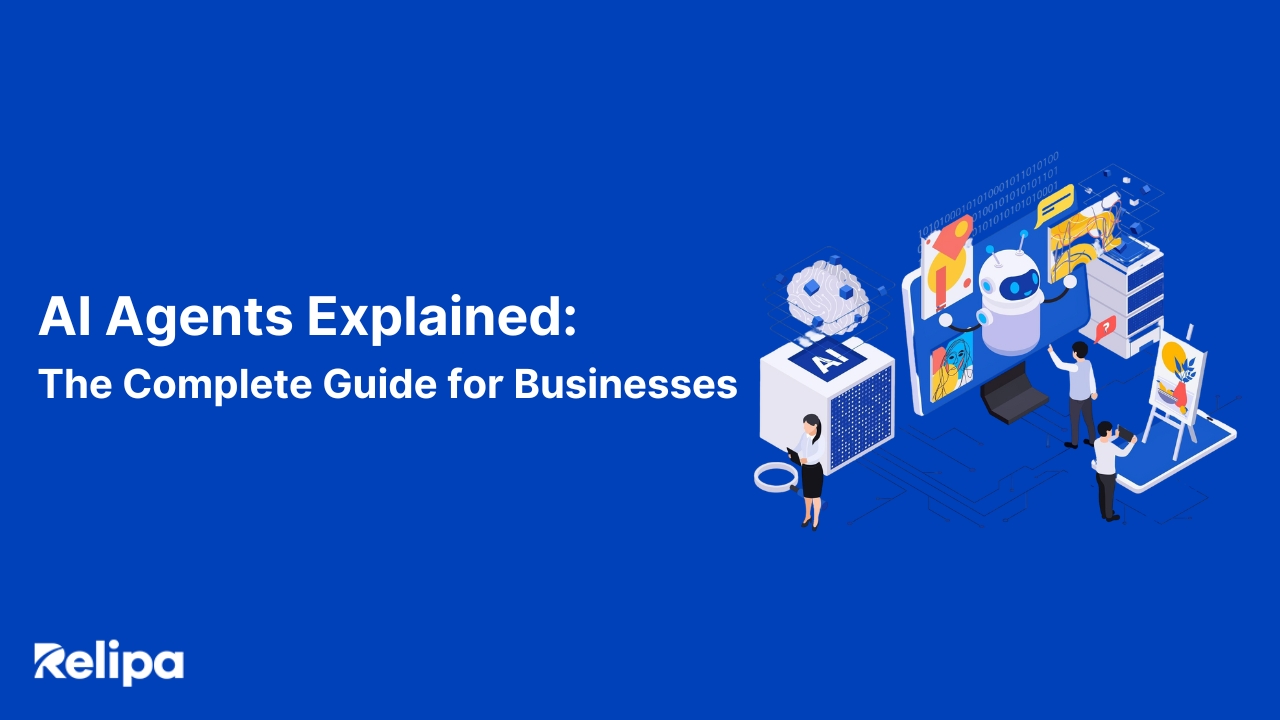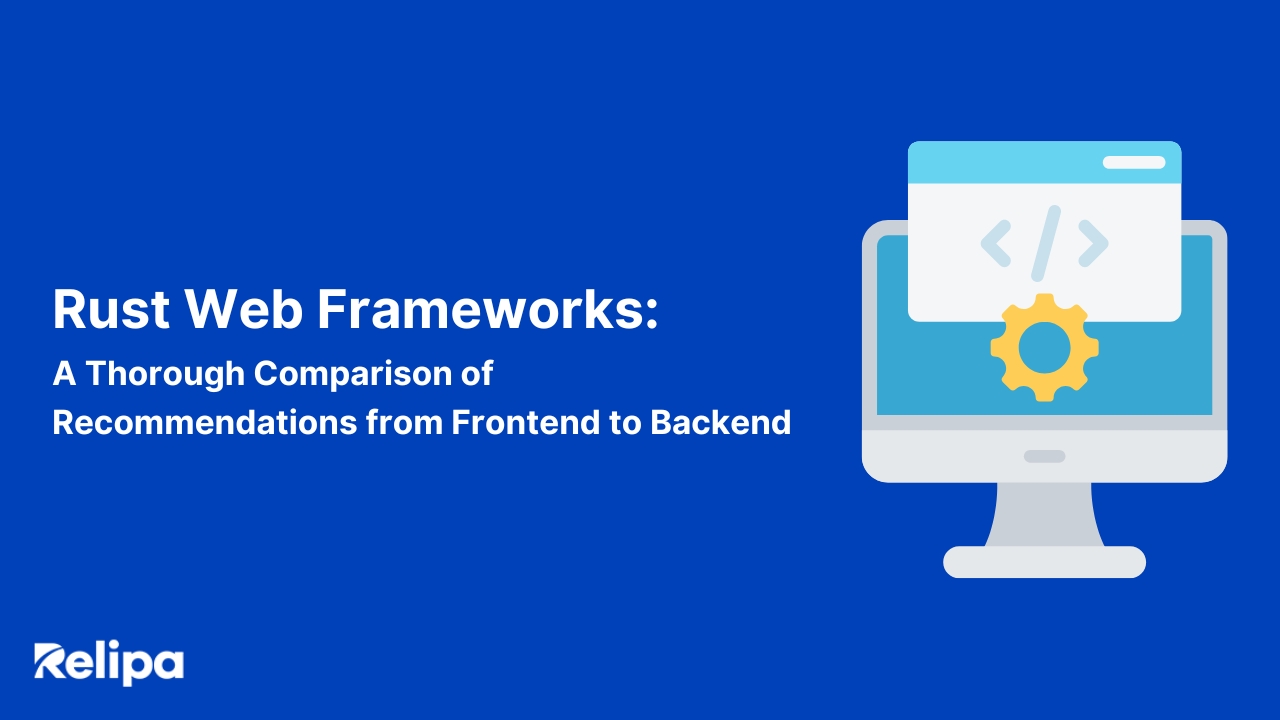Blockchain in Healthcare: Building the Trust Layer of Digital Health
According to recent studies published in Digital Health and MDPI, blockchain in healthcare adoption is accelerating. Hospitals, pharmaceutical companies, and even insurers are testing blockchain to secure patient records, verify drug origins, and auto claims. But beyond the statistics, the transition from data ownership to data stewardship, where the value of information lies not in who controls it, but in how responsibly it’s shared.
Unlike traditional databases, blockchain doesn’t rely on a single authority. It distributes trust across a network, using cryptography to prove authenticity and integrity at every step. This shift could finally bridge the long-standing gaps in healthcare interoperability, allowing records, test results, and prescriptions to flow securely between systems without friction or middlemen.
This blog explores how the technology works, examines its pros and cons, reviews live use cases, and maps what the next decade of decentralized might look like.
The Rise of Blockchain in Healthcare
The global momentum behind blockchain in healthcare has accelerated rapidly over the past few years. Once dismissed as a niche technology for cryptocurrencies, blockchain is now being tested and deployed by hospitals, life sciences companies, and government health agencies worldwide.

Source: Grand Review Research
According to a Grand Review Research report, the global blockchain technology in healthcare market size was estimated at USD 7.04 billion in 2023 and is projected to reach USD 214.86 billion by 2030, growing at a CAGR of 63.3% from 2024 to 2030. This surge reflects not only technological readiness but also an industry-wide recognition that traditional data systems can no longer keep up with the pace of digital medicine.
Major players are already experimenting with blockchain-driven solutions. The U.S. FDA’s Drug Supply Chain Security Act (DSCSA) pilot programs, for example, have used blockchain to trace pharmaceuticals across supply chains, reducing the risk of counterfeits. In Europe, Estonia has integrated blockchain into its national eHealth system to protect medical data integrity for its citizens.
Advantages of Blockchain in Healthcare
The appeal of blockchain in healthcare lies in its ability to solve problems that have plagued the industry for decades, data fragmentation, security breaches, lack of transparency, and inefficient coordination. While not a cure-all, blockchain introduces a new framework for trust and accountability across complex healthcare ecosystems.
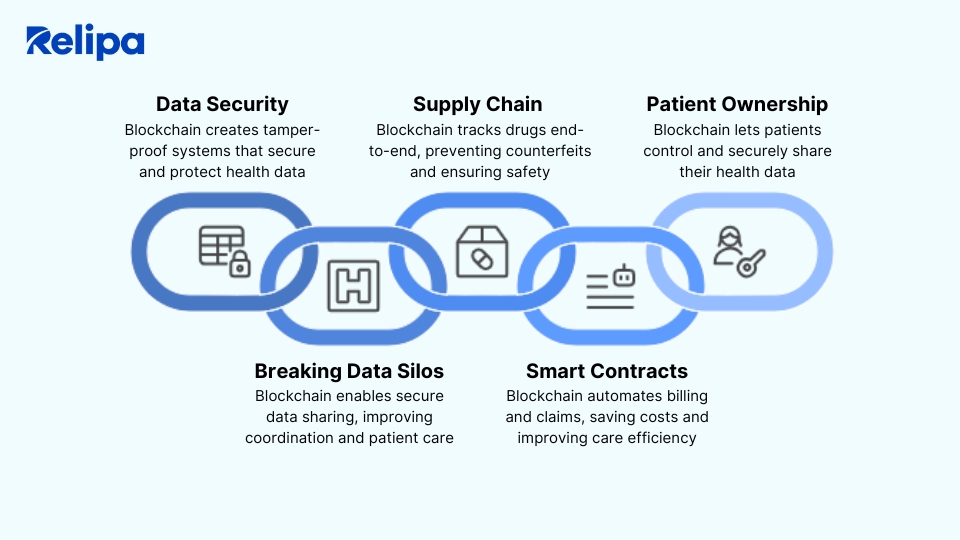
Reinventing Data Security and Trust
Healthcare organizations handle some of the most sensitive personal information in existence, like medical records, genetic data, and insurance details. Yet, according to IBM’s 2024 Cost of a Data Breach Report, the healthcare industry has had the highest data breach cost for 14 consecutive years, averaging $6.5 million per incident. Traditional systems rely on centralized databases that are both attractive targets and single points of failure.
Blockchain turns this model on its head. By distributing data across multiple nodes and validating each transaction cryptographically, it eliminates unauthorized tampering and provides a verifiable audit trail. Instead of trusting one entity, participants trust the system’s mathematics. For patients, this means greater peace of mind; for providers, it builds a new foundation of operational credibility.
Breaking Down Silos with True Interoperability
One of the most persistent barriers in healthcare is the lack of seamless communication between systems. Hospitals, labs, insurers, and pharmacies each use their own proprietary software, making data exchange tedious and error-prone. Blockchain offers a neutral, standardized infrastructure where verified information can flow securely between organizations, without forcing them to surrender control of their internal databases.
This kind of interoperability transforms how care is coordinated. Imagine an emergency physician instantly accessing a patient’s verified medical history from multiple hospitals, without waiting for faxed documents or outdated records. It’s a level of efficiency that could directly save lives.
Transparency in the Pharmaceutical Supply Chain
Counterfeit drugs remain a global crisis, costing the industry billions and endangering patients’ lives. Blockchain brings unprecedented traceability to pharmaceutical logistics. Every transaction, from manufacturing and packaging to shipping and retail, can be recorded on a tamper-proof ledger.
Projects like the FDA’s DSCA Blockchain Pilot and MediLedger have already demonstrated how distributed ledgers can authenticate drugs in real time. If a contaminated or fake batch enters the supply chain, it can be instantly identified and removed, preventing harm before it happens.
Automating Administration Through Smart Contracts
Healthcare’s administrative complexity drains both time and money. Billing disputes, insurance claims, and compliance checks consume vast resources. Smart contracts, a core feature of blockchain, automate these repetitive tasks. For instance, once a patient’s treatment is verified on the ledger, a smart contract can instantly trigger insurance reimbursement, no paperwork, no delays.
Deloitte (2024) projects that this automation could save the global healthcare system up to $150 billion annually by 2028. Beyond cost savings, it reduces human error and frees healthcare professionals to focus on what truly matters: patient care.
Empowering Patients as Data Owners
Perhaps the most revolutionary aspect of blockchain in healthcare is its patient-centric design. Instead of records being controlled by institutions, patients hold cryptographic keys that manage who can access their data, for how long, and for what purpose. This digital sovereignty restores ownership to individuals and enables personalized, consent-driven medicine.
A patient in Tokyo could securely share their vaccination record with a clinic in Berlin in seconds, without third-party intermediaries or privacy risks. It’s a model that treats trust as a built-in feature, not an afterthought.
Limitations of Blockchain in Healthcare
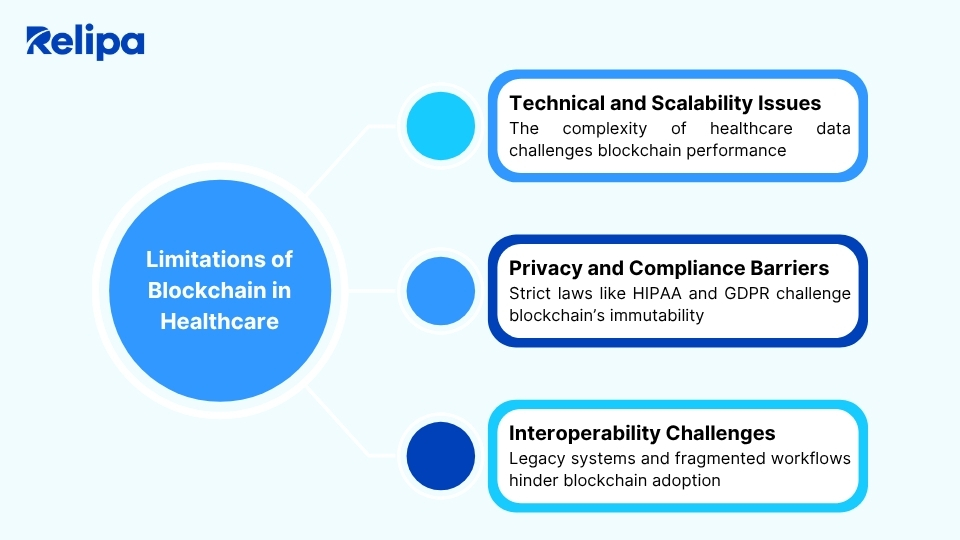
While the promise of blockchain in healthcare is undeniable, translating theory into practice has proven far from simple. Healthcare is an industry defined by strict regulations, legacy infrastructure, and immense data complexity, all of which make integration challenging. As organizations experiment with blockchain pilots, several key limitations have emerged that must be addressed before mainstream adoption can take hold.
Technical and Scalability Issues
Healthcare data is vast and complex, making it difficult for traditional blockchain networks to handle efficiently. Most public chains can process only limited transactions per second, far below what large hospitals require. Storing heavy medical data on chain also drives up costs and slows performance, which can disrupt critical operations. These scalability bottlenecks remain a key reason why many blockchain pilots in healthcare haven’t yet reached full-scale adoption.
Developers are turning to hybrid and Layer 2 architectures that store sensitive data off-chain while keeping immutable proof on-chain to address these limits. Frameworks like Hyperledger Fabric and Corda enable permissioned networks tailored to healthcare, improving speed, privacy, and interoperability. These advances are pushing blockchain closer to enterprise-grade readiness without compromising its core strengths of transparency and traceability.
Privacy, Legal, and Compliance Barriers
The immutability that makes blockchain trustworthy also complicates compliance with privacy laws such as HIPAA and GDPR, which require that patient data can be modified or erased upon request. Additionally, decentralized systems raise new questions about data ownership and responsibility: who controls or corrects the information once it’s on-chain? These conflicts have slowed regulatory approval and made hospitals cautious about adoption.
In response, new approaches like zero-knowledge proofs, selective disclosure, and permissioned blockchains are emerging. These methods allow entities to verify or share medical data securely without revealing private details. Governments and health agencies are also beginning to recognize blockchain frameworks that align with existing compliance standards, suggesting that regulation and innovation may soon find common ground.
Integration and Interoperability Challenges
Healthcare IT environments are fragmented, often running on outdated systems that can’t easily connect with external networks. Integrating blockchain requires major workflow redesigns, staff retraining, and cooperation among hospitals, insurers, and regulators, all of which take time and resources. Without interoperability, blockchain risks becoming just another isolated system.
To bridge this gap, global standards like HL7’s FHIR and initiatives under the World Health Organization’s digital health programs are helping create a shared language for healthcare data. As these standards gain traction, blockchain can integrate more smoothly into existing infrastructures, enabling secure and verifiable data exchange across the entire healthcare ecosystem.
Real-World Applications of Blockchain in Healthcare
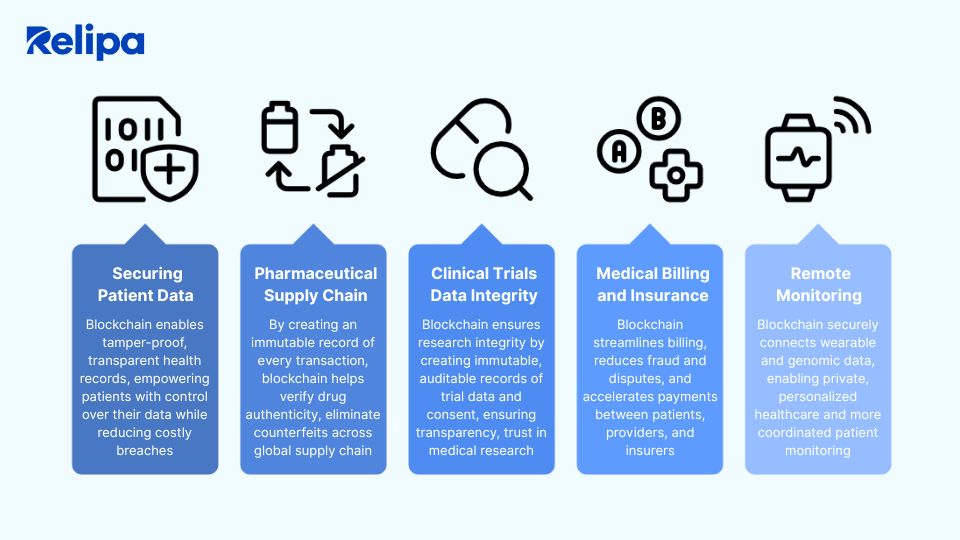
Securing Patient Data and Electronic Health Records (EHRs)
Data breaches are one of the most expensive problems in modern healthcare. According to IBM’s 2024 Cost of a Data Breach Report, the average cost per incident in the healthcare industry has reached $10.9 million, the highest of any industry. Blockchain offers a new model for securing and managing patient data through decentralized, tamper-proof records. Each access or update to a patient’s record can be logged transparently on the blockchain, ensuring both traceability and accountability
Countries like Estonia have already implemented blockchain-based systems across their national eHealth infrastructure. Every citizen’s medical record is secured and verified via blockchain, giving patients full visibility into who accesses their information. Startups such as BurstIQ and MediBloc are pioneering similar systems, where individuals can control permissions for how their medical data is shared with doctors, researchers, or insurers, strengthening both privacy and patient autonomy.
Pharmaceutical Supply Chain Management
Counterfeit drugs are a global public health crisis, costing the pharmaceutical industry over $200 billion annually (World Health Organization). Blockchain provides an immutable ledger for tracking each step of a drug’s journey, from manufacturer to distributor to pharmacy, helping eliminate fake products and ensure authenticity.
The FDA’s Drug Supply Chain Security Act (DSCSA) pilots in the U.S. have demonstrated blockchain’s potential to secure pharmaceutical logistics. Projects like MediLedger, a consortium involving Pfizer, Genentech, and Walmart, use blockchain to authenticate drug shipments in real time. Each product is assigned a unique cryptographic identifier that can be verified anywhere in the supply chain, making tampering nearly impossible.
Clinic Trials and Research Data Integrity
Clinical research depends on accurate data, but manipulation, loss, or misreporting can have life-or-death consequences. Blockchain introduces auditability into trial management by recording every version of a dataset or consent form immutably. This ensures transparency, prevents data fabrication, and builds public trust in research outcomes.
For instance, IBM Watson Healthcare and FDA have explored blockchain to securely share real-world evidence and clinical trial data. Similarly, PharmaLedger, an EU-funded consortium of major pharmaceutical companies and research institutions, is developing blockchain frameworks to streamline data verification and consent tracking in clinical studies. By eliminating redundant intermediaries and automating verification, blockchain reduces administrative costs while enhancing trust between sponsors, regulators, and participants.
Medical Billing and Insurance Claims
Fraud, errors, and delays in insurance claims cost healthcare systems billions each year. The National Health Care Anti-Fraud Association (NHCAA) estimates annual losses in the U.S. alone exceed $60 billion. Blockchain can help address this by offering transparent, automated claim verification through smart contracts.
When a medical service is performed, details can be recorded on a blockchain and automatically cross-checked against a patient’s policy. Smart contracts can trigger instant payments or flag inconsistencies, minimizing manual review. Companies like Change Healthcare have piloted blockchain-based claims processing, achieving faster settlements and fewer disputes. This automation helps save time and rebuild trust between patients, providers, and payers.
Remote Monitoring and Personalized Medicine
With the rise of wearable devices and Internet of Things (IoT) health trackers, patient-generated data is growing exponentially, but often sits in isolated platforms. Blockchain offers a secure, unified way to manage and share this information without compromising privacy.
For example, projects like Solve.Care and Healthereum use blockchain to integrate wearable data into care plans, rewarding patients for following treatment protocols or maintaining healthy habits. In addition, researchers are exploring blockchain-enabled genomic data sharing, allowing individuals to contribute to scientific studies while retaining ownership of their genetic information. This approach supports the shift toward personalized medicine, where treatments are tailored to an individual’s biology, secured and validated through blockchain infrastructure.
The Future of Blockchain Technology in Healthcare
The global blockchain technology in healthcare market size was estimated at USD 7.04 billion in 2023 and is projected to reach USD 214.86 billion by 2030, growing at a CAGR of 63.3% from 2024 to 2030. In the near future, adoption will likely expand through regulated consortium models where stakeholders share responsibility instead of control. Notable initiatives include:
- PharmaLedger (EU): Developing a blockchain-based network for supply chain transparency and clinical trials.
- MediLedger (US): Ensuring compliance with the U.S Drug Supply Chain Security Act by verifying drug provenance.
- FDA’s DSCSA Pilot: Testing blockchain for traceability and counterfeit prevention in pharmaceutical logistics.
- European Commission Projects: Exploring blockchain for vaccine authentication and pandemic response tracking.
These initiatives suggest a clear direction: shared data can coexist with privacy, and collaboration can strengthen security. Blockchain is moving from experimentation to implementation, becoming a compliance-grade backbone for medical data integrity.
Looking further, blockchain will serve as the ethical framework behind healthcare’s most powerful technologies:
- AI Integration: Verifying that datasets used in medical AI are transparent, bias-free, and trustworthy.
- IoT-enabled Care: Securing continuous patient data from wearables and sensors in real time.
- Digital Identity: Empowering individuals with self-sovereign healthcare records, portable, immutable, and accessible anywhere.
- Smart Contracts: Automating insurance claims, consent management, and research data sharing securely and transparently.
The road ahead won’t be free of complexity because regulations, scalability, and cultural inertia remain obstacles. But the direction is clear: healthcare is moving toward a model where data flows freely, but trust remains uncompromised. Blockchain will redefine how the system remembers, verifies, and protects what matters most which is human life.
Conclusion
Hospitals, insurers, and regulators are beginning to realize that true digital transformation isn’t about collecting data faster, but protecting it better. Blockchain, when implemented thoughtfully, can make healthcare more transparent, interoperable, and equitable for everyone involved.
Still, success won’t come from technology alone. It will come from the people and partners who know how to balance innovation with compliance, who understand both the code and the care. That’s where forward-thinking development teams, like Relipa, are helping organizations design blockchain systems.
Ready to explore how blockchain can redefine trust in your solutions? Contact Relipa to start building the next generation of secure, patient-centered technology

